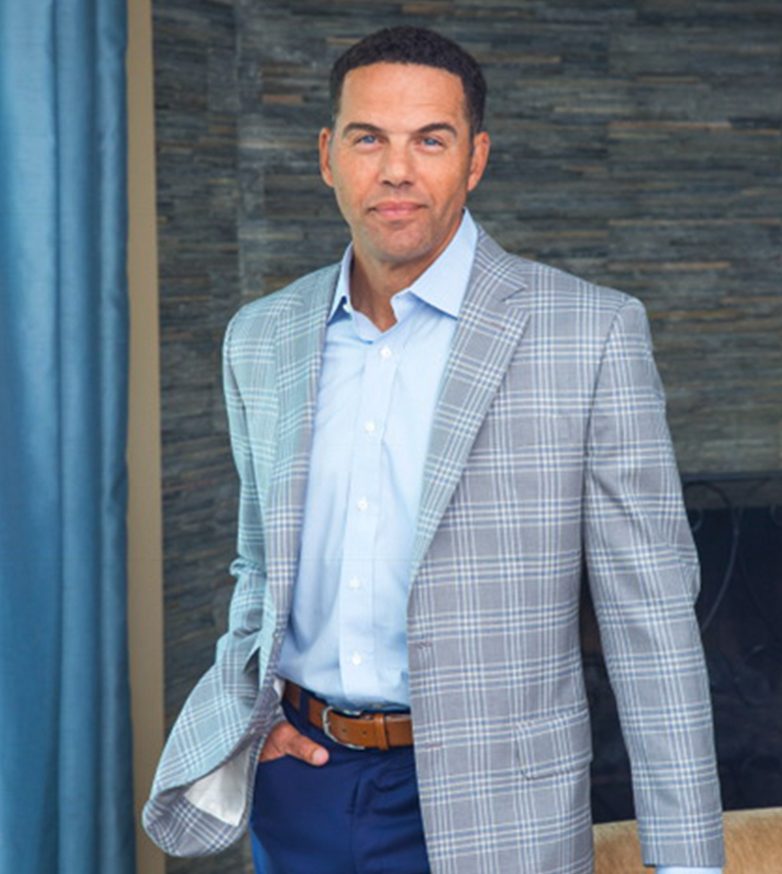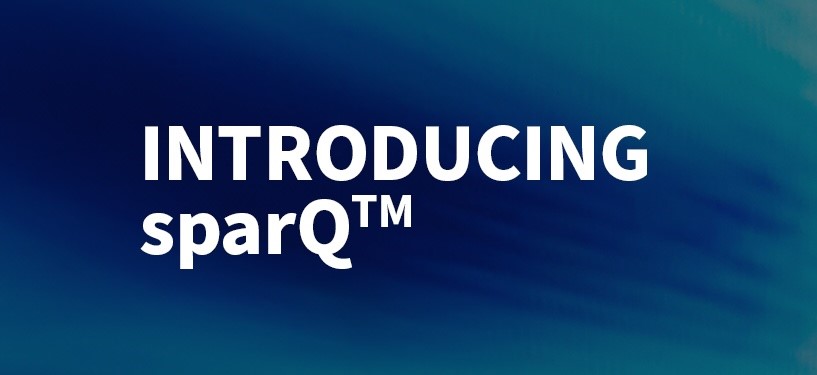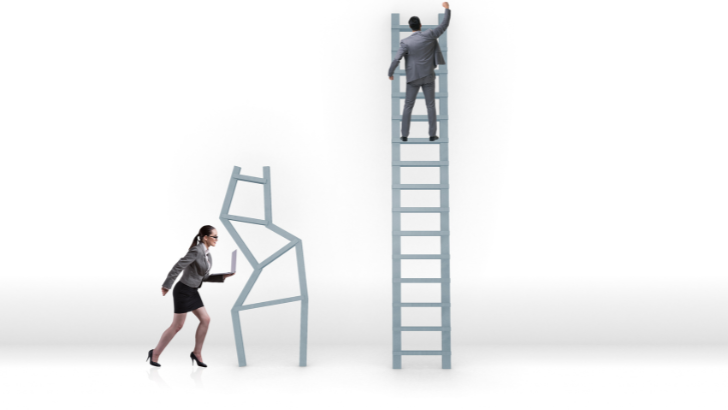What if we began our conversations asking about the seemingly ordinary people who touch our life?
It’s a powerful question, one that Steve Pemberton, CHRO of Workhuman and author of “The Lighthouse Effect: How Ordinary People Can Have an Extraordinary Impact in the World” and “A Chance in the World: An Orphan Boy, a Mysterious Past, and How He Found a Place Called Home,” asks us to consider when interacting with seemingly distant people. We may have many differences, but as human beings, Steve believes we ultimately have more in common, and he has made it his mission and responsibility to reconnect the corporate world with this essence of what it means to be human.
It’s a lofty goal, but for Steve, it is one rooted in deep conviction and lived experience. Though the buzzword of the current moment seems to be “hybrid office or not?,” he invites us instead to take a step back and ask: Who do you want to be, how do you want to treat your people, and how do you create an environment and culture that reflects those ideals?
As CHRO, Steve believes that it’s his responsibility to create that type of workplace that brings value and meaning to his employees’ lives at Workhuman. In doing so, he is leading the way in creating a new way of living and working together.
Workhuman powers the recognition platforms of organizations, who are looking to bring recognition and positivity to their cultures to get the words and values off the wall and into behaviors in a way that will allow companies to both retain and attract their top talent.
MassTLC Community Manager Nayla Daly spoke with Steve about his convictions, his role at Workhuman, and how to create a more inviting, supportive workplace for all.
___
As a people leader, what are your reflections on the last couple of years, and, as a result, the impact in the workforce of the future?
The last time we saw this kind of paradigm shift in the world of work was the advent of the 40-hour Workweek in 1929. Ten years from now regarding the ways in which we work, what will be priorities? What are the covenants between employers and employees? We’re going to be able to tie that back to these last couple of years when the dynamics fundamentally shifted and changed. We’ve renewed focus on wellness at work, the responsibility that employers have to create a greater societal good and tighter alignment between one’s way of living and one’s way of working. That’s all going to be with us. The new generation that will be in the workforce by then will not consider it strange but actually a way of working no different than the 40-hour workweek. This will be one of the many halo effects of the ways in which we engage and interact.
“Ten years from now regarding the ways in which we work, what will be priorities? What are the covenants between employers and employees? We’re going to be able to tie that back to these last couple of years when the dynamics fundamentally shifted and changed.”
I think of the heightened importance of our workspaces and workplaces when there is so much dissonance in discord. We’re generally trying to find our common threads. Social media platforms’ models seem to be anchored in dissonance and difference. Certainly, you would define our politics as being in that place, as well. So where does healing come from? Where is community to be found? It’s going to be in the places where we work and found in the people with whom we work. That, too, is a real paradigm shift to focus on meaningful work and a place where you will feel valued and recognized. It’s no accident that we, at Workhuman, have found ourselves growing in unprecedented form these last couple of years because recognition really matters. People want to be valued and seen and appreciated.
At MassTLC, we are seeing this trend with people from C-level executives to the engineering team. People are remote. They’re all over the world. How is this shift happening with people everywhere? Whether it’s the board that’s all over the world or the C-level team, the marketing team, how do you preserve and create that recognition and culture?
We’re going to have to work harder at that because there is a flip side to the attraction of working remotely. I’ve come to call it the “Home Alone Effect.” In those first several hours that Kevin McCallister is home alone, it’s really cool, he has the run on the place, nobody tells him what to do, all of that, but after a while, the fatigue sets in. That sense of being alone, being isolated, being denied community, that’s what’s happening now.
We’re not able to catch up with our colleagues about the vacations and starting the school year with the kids, those hallway conversations, those after the meeting conversations, grabbing lunch, where people aren’t really talking about work. Those interactions are about actually talking to colleagues about life events and leaning on each other in times of difficulty and stress. Being forced into a virtual world has also had the effect of making us a transactional world of work; we get on a call, we have an agenda, here’s the questions I’m asking, here are our next steps. We’re not spending as much time as before asking ‘how you’re doing?’, ‘how you’re feeling?’
It’s no surprise that the great resignation has been one of the realities that’s emerged because if I don’t see you, I don’t connect to you, and it’s going to be easier for me to depart. I might wrongly think that it’s this way everywhere. It is not this way everywhere. The way that I think about it is that the systems we create are the bricks that are a company, but a brick wall stands for as long as it does, not because of the bricks but because of the mortar between the bricks. That’s what keeps it from falling. That is culture, in essence. When you’re not attentive to it, it begins to chip away. All of a sudden, you see the collapse of culture. We are going to have to be all more purposeful about that, very purposeful.
Do you see the great resignation or great alignment? Why is empowering your workforce important?
I think in the blue-collar sector, it is the great resignation. In the white-collar sector, it’s the great talent swap.
When you begin to look at it, either through the lens of workplace sectors or through industries, you see that’s exactly what’s going on. It’s important to understand, so that you’re putting the right strategies in place. You could wrongly think that if I pay people more, then that’s going to help me address my resignation issues. That might not be the issue. The issue is that you’re not appreciating people, you’re not recognizing them for the work they’re putting in, for example stocking grocery shelves in the midst of a pandemic. Think about what our healthcare workers have gone through. You didn’t hear a lot of complaints from healthcare workers about how much they were getting paid. That wasn’t what they were complaining about. Right now, that’s not what they’re complaining about. It’s about being valued, appreciated, and recognized.
How can you empower your workforce?
Employers don’t have a choice anymore, and we’re fooling ourselves if we think we do. The power right now is with employees, and they are exercising that power with their feet. Once employees realize they don’t have a choice, then how to empower their workforce becomes clear. The how in our world is recognizing the totality of the human experience. Since this pandemic began, for example, we have had a renewed focus on the effect of our workplace on our employees who are parents to young children. The overwhelming majority of our employees are parents to young children, who are also subsequently taking care of aging parents. You have the sandwich generation. The how is recognizing where our employees are in their stages and journeys, what matters to them. Another how is actively inviting them into the conversations. If you’re dictating policies from the mothership, from corporate, and you’re not asking through focus groups, listening sessions about what it is that people are seeking, then that dynamic of engagement of recognition is not going to be there. When you empower employees and you’re willing to use your mouth and ears in the proportion that were given to you on those matters, you’ll find a treasure trove of guidance and information. You want to be clear about what you can and cannot do. You’re not going to be able to meet everybody’s requests, of course, but actively engaging employees in what they’re looking for is very helpful.
To be candid, as an employer, it’s in your own self-interest to engage everyone, because it can help dictate some strategies for you as well. I do think that recognition in its totality, recognizing the importance of people being valued, seen, heard, is the biggest arrow in your quiver.
We need the symbolism of the lighthouse now more than ever, because the most powerful lighthouses in the world are the human wants. Each day presents an opportunity for us to find a lighthouse for ourselves and to be one for somebody else. For me, I found that those are the things that drive our daily lives. The reason that we remember our human lighthouses, the people who touch and impact us, so fondly is because time has shown us how important they were to us – that elementary school teacher, the high school coach, the first boss, the kind neighbor. You look down the runway of your life, and you realize that your life would have wound up in a very different place if it were not for those people who oftentimes themselves are not fully recognized, not fully seen, but their relevance to us is lifelong. Most of us remember our elementary school teachers by name and by experience. I still talk with my second-grade teacher.
Part of the reason the Workhuman Lighthouse grows in significance is because, as we get to different stages of our journey, we realize how important they are. There’s something unifying about that too. You and I, we’re different genders. We could be of different faith expressions. We could be of different races. We could be of different politics. But what if we began our conversation talking about the seemingly ordinary people who touched our lives? We will still have differences, of course, but what we learned from that conversation is that is not the most important thing about us
How can that mindset inform building a workforce?
Work is no longer a place where you go simply to do work. It is an expression of the things that are below the waterline that you cannot see – values and beliefs, a sense of mission, purpose, alignment, connection, and community. Work is a manifestation of that and a place that you go to make contributions to the world. To treat it as a place that you just go to make money is not where people are, and the pandemic has only further affirmed and reminded us of that.
You ought to know that I’m a writer, that I am a pelotoner, those other dimensions of the human experience. You ought to see and actively talk about them and celebrate them. My sense of it is that as the Gen Zs come into the workplace, they’re expecting that. They’re expecting that sense of community and connection. If the employer does not provide that, it will be a disadvantage to those employers. Creating environments where people are able to bring their life experiences drives productivity, efficiency, and innovation. You have some compelling reasons for recognition at the center of what you do as a company, because when you recognize the totality of one’s contributions and their life experiences, it’s more likely to drive greater loyalty to you as an employer.
“Creating environments where people are able to bring their life experiences drives productivity, efficiency, and innovation.”
In other words, you end up having a deeper relationship with your job and with your work and those around you?
Yes, absolutely. There’s a sense of mission. One of the resets of the pandemic is exactly that balance and that cadence between the two. If anything, the lever is more on one’s personal life. I want a couple of mornings to be at the kids’ bus stop. I want to be home in time for bedtime stories. I want to be at the table to help with homework – those kinds of things that the volume and velocity of work has previously conceded.
We observed that you were once a Chief Diversity Officer. What trends are happening in DEI? What is Workhuman’s approach?
The societal tensions that have emerged or have been accelerated in visibility is due in part to the pandemic. I think the murders of George Floyd, Ahmaud Arbery, Briana Taylor, as an African American, those are realities that you live with every single day, so much so that you find it extraordinary when others find it extraordinary. It’s a way of life that you have to deal with, which is especially the case when you’re raising children, things you have to warn them against and about. Yet, despite it all, that’s still not enough, and that’s a regrettable reality.
I think one of the shifts has been the increase in the number of allies. That’s been a major change. To be candid about it, whether one is gay, or disabled, or Latino, you’ve often had to fight those fights alone. Not always, but the overwhelming majority of the time, you’ve had to fight those fights alone. That has been less the case. I think there’s broader recognition that a society that is becoming increasingly diverse is not one that you need to be afraid of and that a culture of dissonance, hatred, and othering will lead to no good place for anybody. That is not a safer world. It’s not a healthier world. It’s not the world where we want our children to grow up.
I see a shift generally away from our politics and media as a defining measure around those behaviors and interactions. If you’re going to take direction from those models for whom the nature of their business seems to be bent on the idea of separation, that we have no common ground, that we can find no common identity, then we’re always going to find ourselves at odds with one another. The workplace and recognition is so important as the antidote to all of that, because proximity is the single most important thing that you can do to eliminate any-ism. Where does that happen in a society that is voluntarily segregated as our society is, where is it most likely to happen? Any given day, any given week, it’s in the workplace. That’s where proximity is most likely to happen. The workplace as a response to dissonance is going to only elevate and increase, and that’s a promising thing.
You have an inspiring personal journey. Would you mind telling me about it and how it has played a role in what you do today?
It shows up in every interaction, every conversation, not directly. I’m not talking about my personal journey every day, but I will tell you that what prompted me to write my book really was a conversation with my older son, Quinn. He wanted to know where my mother and father were when he was six years old. I didn’t realize that a child was thinking about that at that age. He could look at me and his mother and say, “Okay, I know where I’ve come from and I know where mom comes from, because I see my grandparents, but I don’t know…Where did you come from?” That prompted me to write the book. At that point in my life, raising a young family, writing a book was not on my list of things to do, but I knew how important it was for Quinn, for Vaughn, and for Kennedy. I realized what I encountered was, in essence, this 100-year story, that was a reflection of real breakdowns, systems, and structures that fail people and failed generations. It failed me, it failed my parents, and failed my grandparents in different ways. My interest and passion around things that are related to the human condition in human resources came from that personal journey of knowing what’s happening in the balance of systems and structures that support people and the personal impact that those things have. That, for me, is always part of what I am trying to accomplish in daily interactions. Human resources is a great way to do that because, in essence, in human resources we’re the people who take care of people.
I was on an internal call this morning, and I was reminding a group about what our employees have experienced, because I see that. I know someone who’s lost a parent to COVID, I know who is concerned about taking care of aging parents, and I know who’s received a life-threatening diagnosis. Whatever internal challenges we’re facing – and you might not like a business decision, you might not like a meeting – that pales in comparison to what’s hanging in the balance for others. It’s knowing, on the other hand, just how important we are as a Workhuman community to our people, to their lives, and how much strength, courage, example, conviction, resilience that they gained from their colleagues and work family. It is my responsibility to create that environment where people can find a workplace that is committed and passionate about creating the kinds of experiences that bring value and meaning to their life and to root out those things that do not.
___




